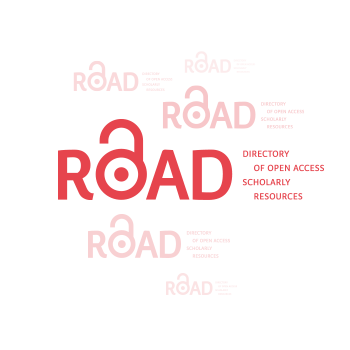Satellite Imagery Employed to Analyze the Extent of Urban Land Transformation in The Punjab District of Pakistan
DOI:
https://doi.org/10.59994/pau.2025.2.17Keywords:
Urbanization Transformation, Machine Learning, Satellite Imagery, Punjab, PakistanAbstract
Satellite imagery represents a vital resource for comprehensively analyzing and monitoring the consequences of rapid urbanization. With the continuous expansion of urban areas, satellite data enables the detection of changes in land use, the spread of urban sprawl, and the development of infrastructure. In the Punjab district of Pakistan, accelerated urban growth has had adverse effects on agricultural land, leading to a decline in agricultural productivity and contributing to a national shortage of food supplies. The utilization of satellite images facilitates the assessment of urbanization's impact on key natural resources, including arable land, forests, wetlands, and river systems. Moreover, satellite-based analysis allows for the annual comparison of land transformation ratios, particularly the conversion of agricultural land into urban settlements. This process aids in identifying land ownership patterns and in understanding the spatial extent and progression of urban expansion. Integrating machine learning classifiers such as Random Forest, Support Vector Machine (SVM), and K-Nearest Neighbor (KNN) with satellite data further enhances the accuracy of applications like land cover classification, change detection, and object recognition. The insights derived from these technologies offer valuable support to policymakers and urban planners, enabling them to develop evidence-based strategies for managing urban growth. Ultimately, such information is instrumental in guiding sustainable urban planning efforts, protecting environmental resources, and prioritizing conservation initiatives in rapidly developing regions.
Downloads
References
Ahmed, B., & Ahmed, R. (2012). Modeling urban land cover growth dynamics using multi temporal satellite images: a case study of Dhaka, Bangladesh. ISPRS International Journal of Geo-Information, 1(1), 3-31. DOI: https://doi.org/10.3390/ijgi1010003
Al-Khasawneh, M. A., Raza, A., Khan, S. U. R., & Khan, Z. (2024). Stock market trend prediction using deep learning approach. Computational Economics, 1-32. DOI: https://doi.org/10.1007/s10614-024-10714-1
Borra, S., Thanki, R., & Dey, N. (2019). Satellite image clustering. In Satellite Image Analysis: Clustering and Classification (pp. 31-52). Singapore: Springer Singapore. DOI: https://doi.org/10.1007/978-981-13-6424-2_3
Busgeeth, K., van den Bergh, F., Whisken, J., & Brits, A. (2008, November). Potential application of remote sensing in monitoring informal settlements in South Africa where complimentary data does not exist. In Geoinformatics 2008 and Joint Conference on GIS and Built Environment: Classification of Remote Sensing Images (Vol. 7147, pp. 97-106). SPIE. DOI: https://doi.org/10.1117/12.813211
Dai, Q., Ishfaque, M., Khan, S. U. R., Luo, Y. L., Lei, Y., Zhang, B., & Zhou, W. (2024). Image classification for sub-surface crack identification in concrete dam based on borehole CCTV images using deep dense hybrid model. Stochastic Environmental Research and Risk Assessment, 1-18. DOI: https://doi.org/10.1007/s00477-024-02743-x
Faid, A. M., & Abdulaziz, A. M. (2012). Monitoring land-use change-associated land development using multitemporal Landsat data and geoinformatics in Kom Ombo area, South Egypt. International Journal of Remote Sensing, 33(22), 7024-7046. DOI: https://doi.org/10.1080/01431161.2012.697207
Farooq, M. U., & Beg, M. O. (2019, November). Bigdata analysis of stack overflow for energy consumption of android framework. In 2019 International Conference on Innovative Computing (ICIC) (pp. 1-9). IEEE. DOI: https://doi.org/10.1109/ICIC48496.2019.8966682
Farooq, M. U., Khan, S. U. R., & Beg, M. O. (2019, November). Melta: A method level energy estimation technique for android development. In 2019 International Conference on Innovative Computing (ICIC) (pp. 1-10). IEEE. DOI: https://doi.org/10.1109/ICIC48496.2019.8966712
Ghalib, A., Qadir, A., & Ahmad, S. R. (2017). Evaluation of developmental progress in some cities of Punjab, Pakistan, using urban sustainability indicators. Sustainability, 9(8), 1473. DOI: https://doi.org/10.3390/su9081473
Giustarini, L., Hostache, R., Matgen, P., Schumann, G. J. P., Bates, P. D., & Mason, D. C. (2012). A change detection approach to flood mapping in urban areas using TerraSAR-X. IEEE transactions on Geoscience and Remote Sensing, 51(4), 2417-2430. DOI: https://doi.org/10.1109/TGRS.2012.2210901
Hassan, E. (2016). Comparative study on the biosorption of Pb (II), Cd (II) and Zn (II) using Lemon grass (Cymbopogon citratus): kinetics, isotherms and thermodynamics. Chem Int, 2(2), 89-102.
Hassan, Z., Shabbir, R., Ahmad, S. S., Malik, A. H., Aziz, N., Butt, A., & Erum, S. (2016). Dynamics of land use and land cover change (LULCC) using geospatial techniques: a case study of Islamabad Pakistan. SpringerPlus, 5(1), 812. DOI: https://doi.org/10.1186/s40064-016-2414-z
Hepcan, S., Hepcan, C. C., Kilicaslan, C., Ozkan, M. B., & Kocan, N. (2013). Analyzing landscape change and urban sprawl in a Mediterranean coastal landscape: a case study from Izmir, Turkey. Journal of Coastal Research, 29(2), 301-310. DOI: https://doi.org/10.2112/JCOASTRES-D-11-00064.1
Khan, S. R., Raza, A., Waqas, M., & Zia, M. A. R. (2023). Efficient and Accurate Image Classification Via Spatial Pyramid Matching and SURF Sparse Coding. Lahore Garrison University Research Journal of Computer Science and Information Technology, 7(4). DOI: https://doi.org/10.54692/lgurjcsit.2023.074532
Khan, S. U. R., & Asif, S. (2024). Oral cancer detection using feature-level fusion and novel self-attention mechanisms. Biomedical Signal Processing and Control, 95, 106437. DOI: https://doi.org/10.1016/j.bspc.2024.106437
Khan, S. U. R., Zhao, M., Asif, S., & Chen, X. (2024 a). Hybrid‐NET: a fusion of DenseNet169 and advanced machine learning classifiers for enhanced brain tumor diagnosis. International Journal of Imaging Systems and Technology, 34(1), e22975. DOI: https://doi.org/10.1002/ima.22975
Khan, U. S., & Khan, S. U. R. (2025). Boost diagnostic performance in retinal disease classification utilizing deep ensemble classifiers based on OCT. Multimedia Tools and Applications, 84(19), 21227-21247. DOI: https://doi.org/10.1007/s11042-024-19922-1
Khan, U. S., Ishfaque, M., Khan, S. U. R., Xu, F., Chen, L., & Lei, Y. (2024 b). Comparative analysis of twelve transfer learning models for the prediction and crack detection in concrete dams, based on borehole images. Frontiers of Structural and Civil Engineering, 18(10), 1507-1523. DOI: https://doi.org/10.1007/s11709-024-1090-2
Li, Y., Cao, Z., Long, H., Liu, Y., & Li, W. (2017). Dynamic analysis of ecological environment combined with land cover and NDVI changes and implications for sustainable urban–rural development: The case of Mu Us Sandy Land, China. Journal of Cleaner Production, 142, 697-715. DOI: https://doi.org/10.1016/j.jclepro.2016.09.011
Lin, Y., Qiu, R., Yao, J., Hu, X., & Lin, J. (2019). The effects of urbanization on China's forest loss from 2000 to 2012: Evidence from a panel analysis. Journal of Cleaner Production, 214, 270-278. DOI: https://doi.org/10.1016/j.jclepro.2018.12.317
Manandhar, R., Odeh, I. O., & Ancev, T. (2009). Improving the accuracy of land use and land cover classification of Landsat data using post-classification enhancement. Remote Sensing, 1(3), 330-344. DOI: https://doi.org/10.3390/rs1030330
Meyer, J. H. (2014). Turks across empires: Marketing Muslim identity in the Russian-Ottoman borderlands, 1856-1914. Oxford University Press. DOI: https://doi.org/10.1093/acprof:oso/9780198725145.001.0001
Mueller, N., Lewis, A., Roberts, D., Ring, S., Melrose, R., Sixsmith, J., ... & Ip, A. (2016). Water observations from space: Mapping surface water from 25 years of Landsat imagery across Australia. Remote Sensing of Environment, 174, 341-352. DOI: https://doi.org/10.1016/j.rse.2015.11.003
Murmu, P., Kumar, M., Lal, D., Sonker, I., & Singh, S. K. (2019). Delineation of groundwater potential zones using geospatial techniques and analytical hierarchy process in Dumka district, Jharkhand, India. Groundwater for Sustainable Development, 9, 100239. DOI: https://doi.org/10.1016/j.gsd.2019.100239
Nyatuame, M., Amekudzi, L. K., & Agodzo, S. K. (2020). Assessing the land use/land cover and climate change impact on water balance on Tordzie watershed. Remote Sensing Applications: Society and Environment, 20, 100381. DOI: https://doi.org/10.1016/j.rsase.2020.100381
Patra, S., Mishra, P., & Mahapatra, S. C. (2018). Delineation of groundwater potential zone for sustainable development: A case study from Ganga Alluvial Plain covering Hooghly district of India using remote sensing, geographic information system and analytic hierarchy process. Journal of Cleaner Production, 172, 2485-2502. DOI: https://doi.org/10.1016/j.jclepro.2017.11.161
Raza, A., Meeran, M. T., & Bilhaj, U. (2023). Enhancing breast cancer detection through thermal imaging and customized 2D CNN classifiers. VFAST Transactions on Software Engineering, 11(4), 80-92. DOI: https://doi.org/10.21015/vtse.v11i4.1684
Raza, A., Soomro, M. H., Shahzad, I., & Batool, S. (2024). Abstractive text summarization for Urdu language. Journal of Computing & Biomedical Informatics, 7(02).
Sakieh, Y., Salmanmahiny, A., Jafarnezhad, J., Mehri, A., Kamyab, H., & Galdavi, S. (2015). Evaluating the strategy of decentralized urban land-use planning in a developing region. Land use policy, 48, 534-551. DOI: https://doi.org/10.1016/j.landusepol.2015.07.004
Shahzad, I., Khan, S. U. R., Waseem, A., Abideen, Z. U., & Liu, J. (2024). Enhancing ASD classification through hybrid attention-based learning of facial features. Signal, Image and Video Processing, 18(Suppl 1), 475-488. DOI: https://doi.org/10.1007/s11760-024-03167-4
Tanguay, G. A., Rajaonson, J., Lefebvre, J. F., & Lanoie, P. (2010). Measuring the sustainability of cities: An analysis of the use of local indicators. Ecological indicators, 10(2), 407-418. DOI: https://doi.org/10.1016/j.ecolind.2009.07.013
Tehrany, M. S., Pradhan, B., Mansor, S., & Ahmad, N. (2015). Flood susceptibility assessment using GIS-based support vector machine model with different kernel types. Catena, 125, 91-101. DOI: https://doi.org/10.1016/j.catena.2014.10.017
Zhang, X. Q. (2016). The trends, promises and challenges of urbanisation in the world. Habitat international, 54, 241-252. DOI: https://doi.org/10.1016/j.habitatint.2015.11.018
Zhao, X., He, J., Luo, Y., & Li, Y. (2022). An analytical method to determine typical residential district models for predicting the urban heat island effect in residential areas. Urban Climate, 41, 101007. DOI: https://doi.org/10.1016/j.uclim.2021.101007
Zlotnik, H. (2017). World urbanization: trends and prospects. In New forms of urbanization (pp. 43-64). Routledge. DOI: https://doi.org/10.4324/9781315248073-3
Downloads
Published
How to Cite
Issue
Section
License
Copyright (c) 2025 Journal of Palestine Ahliya University for Research and Studies

This work is licensed under a Creative Commons Attribution 4.0 International License.
مجلة جامعة فلسطين الاهلية للبحوث والدراسات تعتمد رخصة نَسب المُصنَّف 4.0 دولي (CC BY 4.0)











